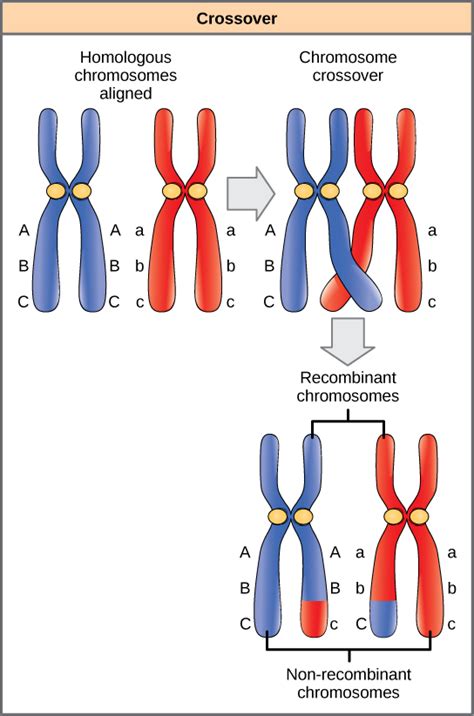Genes are the fundamental units of heredity, carrying the genetic information that is passed down from parents to offspring. These segments of DNA (deoxyribonucleic acid) play a crucial role in shaping an organism’s physical traits, characteristics, and susceptibility to diseases.

Genetic Inheritance and Gene Expression
Genes are located on chromosomes, which are structures found in the nucleus of every cell in the body. Each cell contains two sets of chromosomes, one set inherited from the mother and the other from the father. During reproduction, the genetic material is duplicated and passed on to the offspring, ensuring the continuation of inherited traits.
The expression of genes, or the process by which genetic information is translated into physical traits, is influenced by a complex interplay of factors, including:
- Environmental factors: External conditions such as temperature, nutrition, and exposure to chemicals can affect gene expression.
- Epigenetic modifications: Chemical changes to DNA or its associated proteins can alter gene activity without changing the underlying genetic code.
- Gene regulation: Mechanisms exist within cells to control the activation and deactivation of genes, ensuring appropriate expression in specific tissues and at specific stages of development.
Types of Genes
There are various types of genes, each with specific functions:
- Coding genes: Encode proteins, which are essential for cellular structure, function, and regulation.
- Non-coding genes: Do not code for proteins but play critical roles in gene regulation, RNA synthesis, and other cellular processes.
- Regulatory genes: Control the expression of other genes, ensuring the proper timing and location of protein production.
DNA Structure and Gene Function
DNA is a double helix composed of four nucleotide bases: adenine (A), thymine (T), guanine (G), and cytosine (C). The sequence of these bases along the DNA molecule determines the genetic code and specifies the amino acid sequence of proteins.
Genes consist of regions with specific functions:
- Promoter: Signals the start of gene transcription.
- Exons: Encode the protein-coding sequences.
- Introns: Non-coding sequences that are removed during RNA processing.
- Terminator: Signals the end of gene transcription.
Gene Mutation and Genetic Disorders
Changes in the DNA sequence, known as gene mutations, can alter the function of genes and lead to genetic disorders. These mutations can be inherited or acquired during an individual’s lifetime.
Common types of gene mutations include:
- Single-nucleotide polymorphism (SNP): A change in a single nucleotide.
- Insertion or deletion: The addition or removal of nucleotides.
- Copy number variation (CNV): Changes in the number of copies of a gene.
- Structural variation: Large-scale changes in gene structure.
Gene mutations can have varying effects, ranging from benign to severe. Some mutations can cause genetic disorders such as:
- Cystic fibrosis: A progressive lung disease caused by mutations in the CFTR gene.
- Sickle cell anemia: A red blood cell disorder caused by mutations in the HBB gene.
- Huntington’s disease: A neurodegenerative disorder caused by mutations in the HTT gene.
Gene Therapy and Biomedical Applications
Advances in gene technology have opened up new possibilities for treating genetic disorders and improving human health. Gene therapy approaches aim to correct defective genes or introduce therapeutic genes into cells to restore normal function.
Biomedical applications of gene technology include:
- Genetic screening: Identifying individuals at risk for genetic disorders.
- Gene editing: Precisely modifying DNA using technologies such as CRISPR-Cas9.
- Personalized medicine: Tailoring treatments to an individual’s genetic profile.
- Genealogy and ancestry tracing: Using genetic information to explore family history and connections.
Key Data on Genes
- Each human cell contains approximately 2 meters of DNA.
- The human genome consists of approximately 20,000-25,000 genes.
- Over 99% of human DNA is non-coding.
- Approximately 4 million people in the United States are living with a rare genetic disorder.
- The global market for gene therapy is projected to reach $26.64 billion by 2027.
Engaging with Customers: Validation, Needs, and Pain Points
In the medical and scientific field, it is crucial to validate customers’ points of view by asking questions that engage them and lead to a deeper understanding of their wants and needs.
-
Questions for validation:
- What challenges have you faced in understanding your genetic information?
- How confident are you in the accuracy of genetic testing results?
-
Questions about needs:
- What are your hopes and aspirations for the future of gene technology?
- How could gene therapy potentially benefit you or your loved ones?
-
Questions about pain points:
- What frustrations have you encountered in accessing genetic services?
- Are there specific genetic disorders that concern you or your family?
By engaging with customers and addressing their concerns, we can develop innovative solutions that meet their needs and improve the quality of life for those affected by genetic conditions.
Useful Tables
| Table 1: Types of Genes | Table 2: Common Gene Mutations | Table 3: Gene Technology Applications | Table 4: Customer Engagement Questions |
|---|---|---|---|
| Coding genes | Single-nucleotide polymorphism (SNP) | Genetic screening | What challenges have you faced in understanding your genetic information? |
| Non-coding genes | Insertion or deletion | Gene editing | How confident are you in the accuracy of genetic testing results? |
| Regulatory genes | Copy number variation (CNV) | Personalized medicine | What are your hopes and aspirations for the future of gene technology? |
| Structural variation | Genealogy and ancestry tracing | How could gene therapy potentially benefit you or your loved ones? | |
| What frustrations have you encountered in accessing genetic services? | |||
| Are there specific genetic disorders that concern you or your family? |
Conclusion
Genes are the building blocks of heredity, carrying genetic information that shapes our physical traits, characteristics, and disease susceptibility. Understanding the function and behavior of genes is crucial for advancing medical treatments, improving human health, and unlocking the potential of gene technology for future applications. By engaging with customers and addressing their concerns, we can develop innovative solutions that meet their needs and make a positive impact on society.
